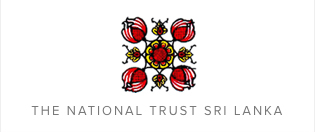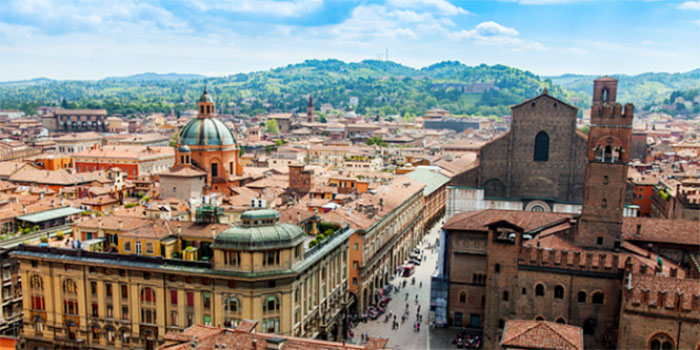Liberal Arts Perspectives

University of Bologna: ‘Medieval universities had five faculties: arts, philosophy, law, medicine and theology. Of these, the faculty of arts had the largest number of students and theology dominatedthem all in authority as clerics often were the teachers and the officials of universities.’
Source: The Island
Professor Liyanage Amarakeerthi’s address before the College of Psychiatry raised two questions in my mind: liberal arts education and the appreciation of a novel. I will write some notes on liberal arts education. I have not read the novel he analysed.
What is liberal about liberal arts education? To understand that you must ask the further question what was education liberated from? It was liberated from theology, from the Roman Catholic Church, from scholasticism, from Aristotle and from the dominance of Latin. People turned from the study of God to the study of humans and his environment, hence humanism and the humanities. Protagora’s line came back to life: ‘Man is the measure of all things ….’ Mathematics became ‘the language in which the book of nature was written’ rather an aid to astrology. Knowledge was freed from the supremacy of sacerdotum, the church. In France that dominance continued till the Revolution. That dominance was something that we now can only imagine. The Pope, claiming that he was either the Vicar of Christ or successor to St Peter, exercised enormous power over believers. He anointed kings, excommunicated them, kept repentant kings kneeling before his closed door in winter cold, contracted peace among feuding kings and chartered universities. On occasion, bishops exercised some of these powers. Henry VIII’s breach with the Pope, the dissolution of monasteries in England and the use of some of that wealth to set up Trinity College in Cambridge (and its eventual contribution to the advance of knowledge, especially in mathematics and physics from Newton to Hawkins) was a seminal to the spread of liberal arts education. The revolution in 1688 in England was, in part, a rejection of James II to attempts to re-establish the dominance of Catholicism, following his cousin in Paris. The first amendment to the constitution of US reads ‘Congress shall make no law respecting the establishment of any religion, or prohibiting the free exercise thereof’. The French Revolution threw out the privileges of not only kings and the aristocracy but also of the Catholic church. The thinkers of pre-revolutionary Paris Montesquieu, Diderot, D’Alembert, Voltaire, Quesnay, say (Say’s first name was Jean-Baptiste which Grenouille, which the protagonist in the novel Amarakirthi analysed, also bore) and many others contributed mightily to the outcome.
Knowledge was freed from scholasticism and Aristotle. Aritotle’s Organon was replaced with Francis Bacon’s Novum Organum. Latin was replaced with vernaculars after Martin Luther translated the Bible into German and after a committee of clerics similarly translated the Bible into English to form the Authorised Version. The content of that liberal arts education kept on growing and growing until sometime in the late 19th century, universities began to award the B.Sc. Degree, although Harvard College had appointed a professor of science as early as 1756. In 1700, in Paris there was the Academie des sciences. A few centuries after education was freed, as the guild system dissolved itself, apprentices were liberated to choose a craft of their choice and employment wherever they wished. So arose the individual as the centre from which society was composed.
The modern threat to liberal arts education comes from the all-powerful state, the Leviathan that saved men and women from the state of nature, which with full blown power threatens to gobble up everything in society. It is paradoxical but the true, that the state simultaneously espouses, nourishes and promotes liberal arts education. Most liberal arts colleges and universities are owned by and operated under governments. But the threat is real mostly in states which have totalitarian governments. In others, the governance and management of institutions are pretty much in the hands of the education institutions. There are two German terms that define the freedoms that educational institutions in non-totalitarian societies wish to enjoy: lernfreiheit (freedom to learn) and lehrenfreiheit (freedom to teach). Students are free to learn what they wish to where they wish to, and teachers are free to teach what they wish where they wish. There is a varied and vast literature on these themes and academics here are far more informed of these than I. I will cite two well-known instances of gross violation of these freedoms, one from the US and the other from India. In the early 1950s, there was the McCarthy witch hunt for communists in higher educational institutions which seriously interfered with their freedom of inquiry. In India a few years ago, a minister intervened to insist that a book written by a teacher in Delhi University be removed from the reading lists for MA students. However, there are many ways in which governments and large corporations interfere with the direction of research and teaching in universities. By funding research and teaching programmes, the funding institutions decide the directions in which universities move. My knowledge of academic institutions in China and Russia is very scant and I refrain commenting on them.
Liberalism grew to free people and people became free when governments intervened to end societies that were ‘nasty, brutish and short’. The neo-liberalist view belies this history. That process contained two streams. One fed the growth of personal freedom, now espoused in extreme forms by libertarians. The other was the main political programme of liberals, best illustrated by the activities of the Liberal Party in Britain in the 19th century and of the Labour Party in the 20th. The expansion of government in society including the regulation of markets was a part of that programme.
Failure to be fed by either of these streams causes starvation of one aspect of society and the emergence of malformations. At one extreme is the insurgence of Donald Trump in US and the pursuit of neo-liberal polices in Chile, both of which threaten democracy in the respective countries. At the other extreme is China which, it has been reported to have raised millions of people from poverty in about 30 years, giving them opportunities for a better life but denied people the freedom to choose. Again, at the expense of a democratic society.
Back to the campus. Medieval universities had five faculties: arts, philosophy, law, medicine and theology. Of these the faculty of arts had the largest number of students and theology dominated them all in authority as clerics often were the teachers and the officials of universities. (The president of Princeton University, until Woodrow Wilson in 1902, was always a clergyman, a presbyterian.) The statutes of Oxford referred to the arts faculty as the fons et origo ceteris– the source and origin of others. It was necessary to obtain B.A. and M.A. degrees to proceed to the higher faculties, except in the case of laws. Much of present-day conventions can be explained in those terms. In US, one cannot proceed to study law, medicine, management or philosophy unless one has completed an M.A/M.Sc. As the teaching content in science became comparable to those in arts, B.Sc. and M.Sc. degrees came to be their equivalents.
Right up to the middle of the 19th century, even small colleges from medieval times could teach all the subjects that were necessary for the award of university degrees. That changed rapidly after a decade or two from then. Few colleges, if any, could teach the whole range of subjects undergraduates undertook to study. When Conant Bryant at Harvard in 1926, introduced the ‘smorgasbord’ of subjects for undergraduates, he announced to the world the expansion of knowledge that had begun about 1850. University faculties asserted themselves and appointed teachers in science to teach in labs, which were expensive to set up. Similarly, social sciences came to be taught in university faculties. The subject matter taught in these faculties became strange to those in others and the problems of ‘two cultures’ emerged and multiplied.
Given the large volume of material now taught in both schools and universities (colleges), it is necessary to think out where do we teach best all students a common curriculum to enable students in each stream talk to others. After all, a Samskrit scholar must be able to read a railway timetable and a theoretical physicist must not put on ear plugs when Bhimsen Joshi sings Meghamalhar. Two characters in C. P. Snow’s (of ‘Two Cultures’ fame) novels Walter Luke in The New Men, a physicist, and Roy Calvert, an orientalist, in The Light and the Dark) exemplify what Snow had in mind. My understanding of the situation is that it cannot be done productively in college or university. In societies like ours where a miniscule fraction of all school children enters universities, it is far more productive to introduce a larger number of students to the world of learning in school. In Britain it, was tried in several newer universities. Columbia had the Great Books course. In France the Baccalaureate examination (Bac) seems a successful attempt to do this.
In our schools now, students enter a stream at age 16. By 18 they are non-returners, either in arts or in science. Children in C schools have one stream to choose from. Students in 1AB schools have the luxury of choice. Students in C schools have a tougher time to enter the other stream.
I was in school a long time ago. It was possible then for a student to learn one or two languages to a good level of proficiency and literature in one of them, learn mathematics (including elementary calculus, coordinate geometry and series in algebra), one science subject (often botany in the absence of a lab and teachers to supervise experimental work) and the three social studies subjects. Of course, those conditions required good teachers. I imagine good schools in urban areas then had facilities for all this and more and now most schools have them. But even a small government central school in some hick town, when under a good principal provided that education. With two years preparatory work in the sixth form, the quality of which varied enormously among schools, a young man or woman entered university, where if he/she were diligent, he/she would come out not altogether a stranger in other faculties. My impression, no more, is that it all depended on teachers and systems matter much less.

